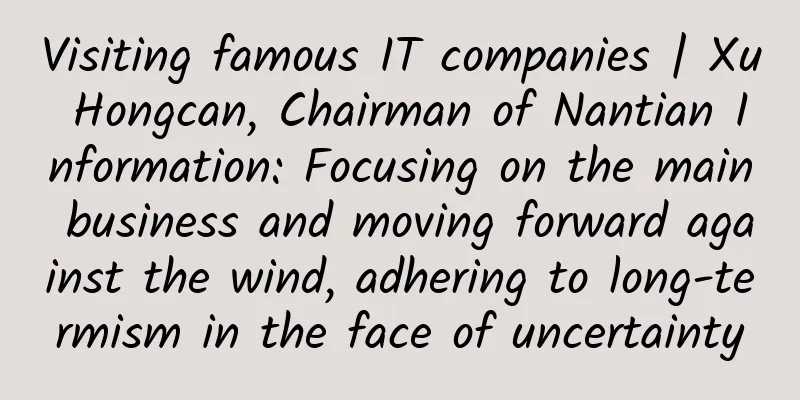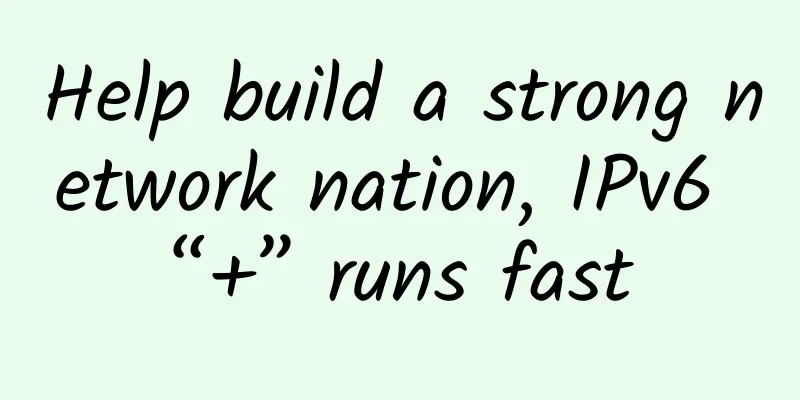Interpretation of the 8 major links of the Internet of Things industry chain in 2017

|
1. Composition of the IoT industry chain The Internet of Things industry chain includes eight major links: chip providers, sensor suppliers, wireless module (including antenna) manufacturers, network operators, platform service providers, system and software developers, smart hardware manufacturers, and system integrators and application service providers. (1) Chip providers: the brain of the Internet of Things; Low-power, high-reliability semiconductor chips are one of the key components that are essential to almost all aspects of the Internet of Things. Depending on the function of the chip, the chips required in the Internet of Things industry include chips integrated in sensors and wireless modules to achieve specific functions, as well as embedded microprocessors embedded in terminal devices to provide "brain" functions. Traditional international semiconductor giants, such as ARM, Intel, Qualcomm, etc. (2) Sensor suppliers: shaping the five senses of the Internet of Things; The essence of a sensor is a detection device. It is a device used to collect various types of information and convert them into specific signals. It can collect information such as identity, pressure, temperature, humidity, light, sound, and smell. Commonly used sensors can be divided into three categories: physical sensors, chemical sensors, and biological sensors. The sensor industry is currently dominated by several leading companies in the United States, Japan, and Germany, and representative companies in my country's sensor market include Hanwei Electronics, Goertek, Guide Infrared, Nawei Technology, Huagong Technology, and Yuanwanggu. (3) Wireless module manufacturers: the key to achieving networking and positioning Wireless modules can be divided into two categories: communication modules and positioning modules. Common local area network technologies include WiFi, Bluetooth, ZigBee, etc. Common wide area network technologies mainly include 2/3/4G, NB-IOT working in the licensed frequency band, and LoRa, SigFox, etc. working in the unlicensed frequency band. Different communications correspond to different communication modules. At present, foreign companies still occupy a dominant position in wireless modules, including Telit, SierraWireless, etc. Domestic manufacturers are also relatively mature and can provide complete products and solutions. (4) Network operators: control the channels of the Internet of Things; Network operators are the most mature link in the current IoT industry chain. The IoT network refers to the integrated network formed by various communication networks and the Internet, including cellular networks, local area ad hoc networks, private networks, etc., so it involves communication equipment, communication networks, SIM manufacturing, etc. The IoT can largely reuse the existing telecom operator networks, such as wired broadband networks, 2/3/4G mobile networks, etc., and is an important promoter of the current domestic IoT development. Therefore, this link will focus on the three major telecom operators and the SIM card manufacturers closely related to them. (5) Platform service providers: improving the effective management of the Internet of Things; As an important link in device aggregation, application services, and data analysis, the IoT platform must not only realize the "management, control, and operation" of terminals downward, but also provide PaaS services for application development, services, and system integration upward. According to the different functions of the platform, it can be divided into three types: device management platform, connection management platform, and application development platform. There are three main types of IoT platform companies in China. The first is the three major telecom operators, which mainly start from building connection management platforms; the second is Internet companies such as BAT and JD.com, which use their respective traditional advantages to mainly build device management and application development platforms; the third is platform manufacturers in their respective segments. (6) System and software developers: building the arteries of the Internet of Things; The systems and software of the Internet of Things generally include operating systems and application software, which can enable the effective operation of IoT devices. Among them, the operating system (OS) is a program that manages and controls the hardware and software resources of the Internet of Things, and is the most basic system software. Other application software can only run normally with the support of the operating system. At present, the main companies that release the IoT operating system are some IT manufacturers. Application software development is mainly concentrated in areas with strong versatility such as the Internet of Vehicles, smart homes, and terminal security. (7) Smart hardware manufacturers: providing terminal hosting for the Internet of Things; Smart hardware refers to equipment that integrates sensors and communication functions, can be connected to the Internet of Things and realize specific functions or services. According to the purchasing customers, it can be divided into 2B and 2C categories. 2B category includes meters, such as smart water meters, smart gas meters, smart electricity meters, industrial monitoring and testing instruments, etc., vehicle pre-installed, industrial equipment and public service monitoring equipment, etc.; 2C category mainly refers to consumer electronics, such as wearable devices, smart homes, etc. (8) System integration and application service providers: implementers of IoT applications; System integration is the process of identifying and integrating multiple products and technologies into a complete solution according to the requirements of a complex information system or subsystem. The current mainstream system integration practices are divided into two categories: equipment system integration and application system integration. Faced with the complex application environment of the Internet of Things and many devices in different fields, system integrators can help customers solve various equipment, subsystem interfaces, protocols, system platforms, application software, and other issues related to subsystems, building environments, construction coordination, organizational management, and staffing, ensuring that customers get the most appropriate solutions. 2. Regional distribution of IoT industry From the perspective of spatial distribution, my country has initially formed a spatial pattern of IoT industry cluster development in four major regions, namely, the Bohai Rim, the Yangtze River Delta, the Pearl River Delta, and the central and western regions, with Beijing-Tianjin, Shanghai-Wuxi, Shenzhen-Guangzhou, and Chongqing-Chengdu as the core. Each industrial cluster is independent and has its own characteristics. (1) The Bohai Rim region with Beijing-Tianjin as its core is an important R&D, design, equipment manufacturing and system integration base for the domestic Internet of Things industry. The region has strong R&D capabilities for key supporting technologies, a high level of industrial application and popularization of sensing nodes, diversified network transmission methods, rapid construction of integrated platforms, and extensive Internet of Things applications. It has basically formed a relatively complete Internet of Things industry development system architecture. (2) The Yangtze River Delta region, with Shanghai and Wuxi as its core, is the birthplace of my country's Internet of Things technology and applications, and has a unique first-mover advantage in the development of the Internet of Things industry. With a deep industrial foundation in the electronic information industry, the development of the Internet of Things industry in the Yangtze River Delta region is mainly positioned at the high-end of the industrial chain, starting from the two core links of the core products and technologies of the Internet of Things software and hardware, implementing standards and patent strategies, and forming a cluster of core and leading enterprises in the national Internet of Things industry. (3) The Pearl River Delta region with Shenzhen-Guangzhou as its core is an important production base for electronic complete machines in China. In the development of the Internet of Things industry, the Pearl River Delta region focuses on breakthroughs in core key technologies and the construction of innovative capabilities, focusing on the construction of Internet of Things infrastructure, the improvement of the level of urban management informatization, and the application of rural information technology, etc., focusing on the manufacturing of Internet of Things equipment, software and system integration, network operation services, and application demonstration areas. (4) The Internet of Things industry in the central and western regions, with Chongqing-Chengdu as the core, has developed rapidly. Key provinces and cities have combined their own advantages to develop the Internet of Things industry and seize market opportunities. Hubei, Sichuan, Shaanxi, Chongqing, Yunnan and other key provinces and cities in the central and western regions have relied on their advantages in scientific research, education and human resources, as well as a good industrial foundation in RFID, chip design, sensor transmission, automatic control, network communication and processing, software and information services, to build a complete Internet of Things industry chain and industrial system, focus on cultivating leading Internet of Things enterprises, and vigorously promote Internet of Things application demonstration projects. 3. Distribution of various links in the Internet of Things industry Relying on the favorable economic environment, strong local financial resources, complete supporting industrial foundation and facilities, some regions in my country have built a large number of IoT demonstration projects, which have promoted the large-scale social application of related technologies and products and provided a good atmosphere for the promotion and popularization of IoT. In general, regions with a good industrial foundation have identified their respective advantages in the four levels of perception layer, network layer, platform layer and application layer. (1) Beijing has the strongest scientific research strength, and has obvious advantages in IoT technology R&D and standardization. It has IoT companies with business areas covering all architectural layers of the IoT system. It has formed a relatively complete industrial chain in the fields of core chip R&D, key components and module manufacturing, complete machine production, system integration, software design and engineering services. (2) Wuxi has a strong sensor industry, strong comprehensive urban strength and a good industrial foundation. Its integrated circuit, software and service outsourcing industries are among the best in the country. Wuxi plans to focus on strengthening innovation in sensing, transmission, processing and common technologies; adopt introduction, cooperation and cultivation to establish and improve various service platforms at all levels required for the technological innovation and industrial development of the Internet of Things. (3) Shanghai has a strong industrial technology foundation and is one of the main birthplaces of China's Internet of Things technology and applications. Shanghai has identified advanced sensors, core control chips, short-range wireless communication technology, networking and collaborative processing, system integration and open platform technology, and massive data management and mining as key areas of development in the Internet of Things industry. (4) Shenzhen is a leading city in the internationalization of China's electronic information industry, with a complete electronic information industry chain and strong corporate innovation capabilities. Shenzhen has formed its own unique advantages in Internet of Things technology, and has advanced technologies and solutions in information communication, sensor technology, radio frequency identification and other links of the industry chain. Shenzhen plans to focus on strengthening the research and application of key Internet of Things technologies; building an Internet of Things sensor information network platform, an Internet of Things information exchange platform and an application resource sharing service platform; increasing the construction and integration of urban Internet of Things sensor networks; and enhancing the application of Internet of Things in the industrial field. (5) In addition to the above regions, many other regions have also planned the development of the Internet of Things industry as a key local development industry. The distribution of several major Internet of Things industry links such as RFID and sensors, Internet of Things equipment, related software, and system integration and application has shown a relatively concentrated trend. With the continuous expansion of the scale of China's Internet of Things industry and the continuous expansion of application fields in the future, the division of labor and integration between the industrial chains will also proceed, and the division of labor and cooperation pattern between regions will also become more apparent. 4. Overview of the Advantageous Industries of IoT Industry in Various Regions of China my country is in a period of rapid development of the Internet of Things. The scale of the industry will exceed one trillion yuan, and the industrial chain is basically complete. The industrial clusters in each region have their own characteristics, and they have different focuses in the development of chip manufacturing, reader manufacturing, label finished product manufacturing, system integration, network provision and operation services, and application demonstration. The industrial field and public services maintain coordinated development. Driven by the active "mass entrepreneurship and innovation" strategy, there are 267 new third board companies. Distribution of the number of IoT companies on the New Third Board |
<<: A brief discussion on the integrated development of data centers
>>: 100G network service acceleration platform T1 GateWare is newly launched
Recommend
What are the similarities between social concepts and the SDN model?
The social principle seems to have a strange conn...
Three things you need to know before embarking on the journey of becoming a data scientist
【51CTO.com Quick Translation】 Currently, the indu...
How 5G will change engineering design
The past decade has seen unprecedented technologi...
How many of the 7 core technologies that operate blockchain do you know?
1. Blockchain Links As the name implies, blockcha...
LuxVPS: €3/month KVM-4GB/30GB/1TB/Germany data center
The LuxVPS domain name was registered in June 202...
VMISS adds Los Angeles CN2 GIA line VPS with 20% discount starting from 4.8 CAD/month
VMISS has recently added a VPS host on the CN2 GI...
Three major dilemmas of big data
【51CTO.com Quick Translation】 Big data, as a set ...
If you write CRUD every day, it’s time to connect the system to the API gateway!
Today I will share with you some knowledge about ...
Ten underutilized SD-WAN features
SD-WAN is more than just an alternative to Multip...
Huawei's Ding Yun: Expanding the Connectivity Business Landscape and Winning the Industry's Digital Blue Ocean
[Beijing, China, October 13, 2020] Today, the 6th...
Interviewer: Do you understand secure data transmission?
Seeing this title, many people will say with cert...
5G and IoT set off a revolutionary wave and provide new value
[[284710]] [51CTO.com Quick Translation] In today...
Ele.me Cheng Yanling: Share the correct way to open the era of multi-active operation and maintenance of the whole site
[51CTO.com original article] On December 1-2, 201...
From East-West Computing to Computing-Network Integration, Mobile Cloud Empowers New Digital Development
With the booming development of the digital econo...
Ministry of Industry and Information Technology: 5G traffic price is 4.4 yuan/GB, down 46% in two years, and will continue to drop in the future
According to China News Service, on March 1, the ...




![[6.18]DogYun: 30% off on Elastic Cloud, 20% off on Classic Cloud, 68 yuan free for 618 yuan top-up, Hong Kong/Korea dedicated servers starting from 300 yuan/month](/upload/images/67cabe7853916.webp)




